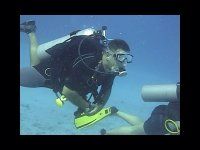Harley.....
PICC lines are used when intravenous access is required over a prolonged period of time, as in the case of long chemotherapy regimens, extended antibiotic therapy, or total parenteral nutrition.
The PICC line is inserted into a peripheral vein using the Seldinger technique under ultrasound guidance, usually in the arm, and then carefully advanced upward until the catheter is in the superior vena cava or the right atrium. This is usually done by feel and estimation; an X-ray then verifies that the tip is in the right place. Usually...but i had to have a PICC line and it had to be done by a radiologist.
A PICC may have two parallel compartments, each with its own external connector (double-lumen), or a single tube and connector (single-lumen). Triple connectors (triple-lumen) catheters and power-injectable PICCs are now available as well. From the outside, a single-lumen PICC resembles a peripheral IV, except that the tubing is slightly wider.
The insertion site must be covered by a larger sterile dressing than would be required for a peripheral IV, due to the higher risk of infection if bacteria travel up the catheter. However, a PICC poses less of a systemic infection risk than other central IVs, because bacteria would have to travel up the entire length of the narrow catheter before spreading through the bloodstream.
The chief advantage of a PICC over other types of central lines is that it is easy to insert, poses a relatively low risk of bleeding, is externally unobtrusive, and can be left in place for months to years for patients who require extended treatment. The chief disadvantage is that it must travel through a relatively small peripheral vein and is therefore limited in diameter, and also somewhat vulnerable to occlusion or damage from movement or squeezing of the arm
And just to add to Eddies post on a Port...... It is possible to leave the ports in the patient's body for years; if this is done however, the port must be accessed monthly and flushed with an anti-coagulant, or the patient risks it getting plugged up. If it is plugged it becomes a hazard as a thrombus will eventually form with an accompanying risk of embolisation. Removal of a port is usually a simple outpatient procedure; however, installation is more complex and a good implant is fairly dependent on the skill of the radiologist. Ports cause less inconvenience and have a lower risk of infection than PICCs, and are therefore commonly used for patients on long-term intermittent treatment.
Have you been offered a choice? Pat



